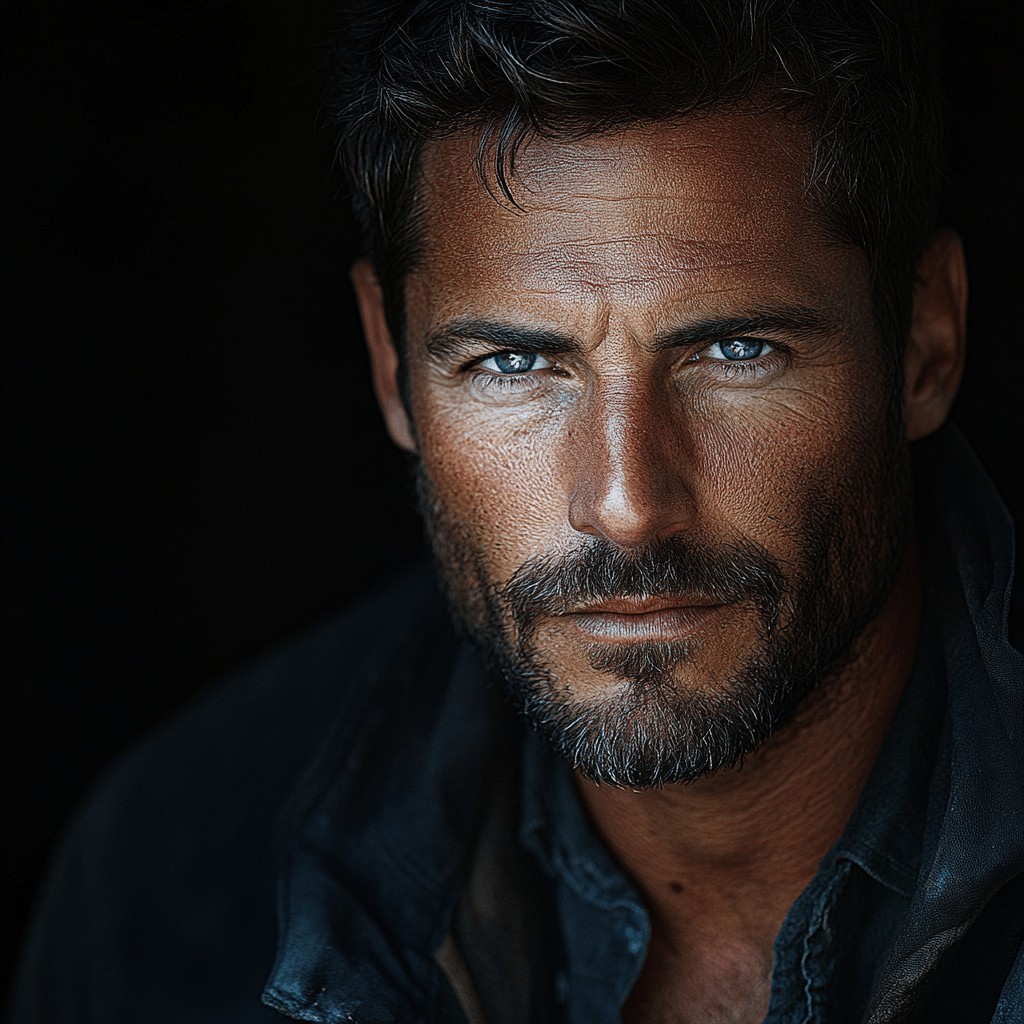Peter Hale is a name that resonates deeply in the world of supernatural drama, captivating audiences with his captivating complexity and fierce ambition. Initially positioned as an ally, Peter Hale evolves into a formidable antagonist, leaving viewers guessing at his intentions. In this article, we’ll delve into the compelling rise of Peter Hale, exploring his character evolution, pivotal moments, psychological depths, cultural impact, and the legacy he continues to shape.
The Evolution of Peter Hale’s Character
Peter Hale is not your average alpha character; he represents a compelling contradiction that questions traditional narrative roles. From the very start, his intentions seem to waver between benevolence and self-interest, which creates an intriguing ambiguity. Viewers can’t help but wonder what drives him, and this uncertainty beautifully illustrates the gray areas of morality that often exist in supernatural storytelling.
His tremendous journey reveals a lot about the nature of power and loyalty. While traditional archetypes might lean heavily towards either heroism or villainy, Peter Hale comfortably drifts between these extremes, showcasing a rich character depth that resonates with audiences. His shrewd intelligence often propels him above his competitors, making him a memorable force rather than just another big bad wolf.
Peter Hale’s characterization doesn’t just challenge conventional narratives; it also symbolizes broader themes about family and legacy. Within the monster mythology, he represents not just personal ambition but the consequences of power struggles and the yearning for connection that drives many characters in supernatural stories. This appeal taps into relatable human experiences, elevating him beyond the ordinary.

The Top 5 Defining Moments in Peter Hale’s Story
The story’s turning point is Peter’s shocking betrayal of the Argents. Initially appearing to join forces with them, he underscores his own thirst for power when he ultimately puts his ambitions ahead of loyalty. This moment encapsulates his cunning nature, depicting how the desire for survival can lead to treachery.
Tragedy shapes Peter Hale’s motivations in a significant way. When he lost his family in the Hale Fire, he didn’t just lose relatives but also a sense of purpose. This loss deeply influences his desire to reclaim power and legacy, layering on a tragic aspect to his fearsome persona that viewers find hard to ignore.
Peter’s transformation into a werewolf is more than just a physical shift; it’s a profound identity change that incorporates his inner darkness. When he embraces his werewolf side, it serves as a vital connection to his ambitions and relationships within the supernatural world, showcasing the tensions inherent in that struggle for power.
One of the most compelling storylines would be Peter’s manipulation of Scott McCall. His efforts to sway Scott to the “dark side” serve as both a reminder of corrupting power and a cautionary tale about influence and decision-making. It’s a perfect illustration of how one can lead another astray through psychological cunning and ambition.
When Peter returns as an alpha, it’s a moment filled with tension and significance. His aggressive leadership style underscores his dominance while reshaping alliances and rivalries throughout the series. This not only reestablishes his formidable status but also amplifies the stakes in the ongoing narrative.
The Psychological Depth Behind Peter Hale
Peter Hale’s character is fascinating because of his psychological complexities. His motivations intertwine ambition, grief, and survival instinct, creating a character that resonates deeply and invites empathy. His internal battles expose the nuances of morality; the question of right and wrong becomes a blurred line, making viewers rethink their own values.
These elements cultivate an engaging narrative where audiences are challenged to question not just Peter Hale’s choices but their own ethical dilemmas. The struggles he faces mirror real-life conflicts, reminding us that strength doesn’t solely come from power but often from emotional resilience and the scars we carry with us.
Moreover, the shifts in Peter’s persona compel viewers to assess the consequences of their actions. His character serves as a reminder that decisions made in pursuit of power can lead to unintended repercussions, making him relatable, complex, and undeniably compelling.

The Cultural Impact of Peter Hale in Modern Media
Peter Hale’s influence extends beyond his narrative, shaping the portrayal of alpha figures in modern media. His intricate mix of charisma and menace inspires characters like Lucifer Morningstar from Lucifer and The Umbrella Academy’s Five, who share that same duality. These figures show that there’s often more beneath the surface than meets the eye, a theme that captivates contemporary audiences looking for depth rather than one-dimensional portrayals of heroism.
The character’s symbolic value as a fearsome yet deeply flawed alpha has paved the way for richer storytelling, allowing creators to explore moral ambiguity in ways that traditional outsider motifs often overlook. Such narratives resonate with viewers, encouraging them to ponder their own definitions of strength and leadership.
As Peter Hale’s story unfolds, it reflects current societal shifts towards recognizing the complexity in human motivations and behaviors. His journey underscores the need for multi-dimensional characters who reflect real-life struggles, ultimately enhancing the viewing experience for audiences across the globe.
Looking Ahead: The Legacy of Peter Hale
As we venture into 2024, the legacy of Peter Hale remains as vital as ever. His character continues to provoke discussions about storytelling and character development, challenging the conventional boundaries of what it means to be an alpha.
Peter’s conflicting nature invites audiences to question the very definitions of heroism and villainy, prompting a reevaluation of how we understand personalities in both fictional narratives and our daily lives. His journey serves as a captivating lens through which we can reflect on themes of loss, ambition, and power.
With so many stories unfolding in modern media, characters like Peter Hale will continue to spark meaningful dialogues about the complexities of human nature. As long as storytellers pursue compelling narratives that resonate beyond mere entertainment, figures like Peter will remain relevant and influential.
By examining Peter Hale’s intricate journey, we espy the often-blurred lines between good and evil. This reflection of our own struggles, triumphs, and choices reminds us of the profound nature of storytelling and its lasting impact on our understanding of ourselves and each other. As Peter Hale’s legacy continues to captivate, it sparks conversations that are as relevant now as they were when he first graced the screen.
Peter Hale: The Intriguing Rise of a Fearsome Alpha
The Origins of Peter Hale’s Character
Peter Hale, the enigmatic alpha from the fan-favorite series “Teen Wolf,” has a deep and layered backstory that fans love to explore. Did you know Peter was initially introduced as a villain, but over time, he’s become a complicated anti-hero? His transformation reflects a classic narrative journey that captivates audiences. Speaking of captivating characters, did you ever consider the eerie connections between Peter and horror icons, like the infamous Michael Myers mask? Much like Mike, Peter carries a fearsome legacy that plays out over time.
As a member of the Hale family, Peter’s ties to the supernatural add an intriguing twist to his character. He exhibits traits similar to those found in folklore, almost like a beast preying on unsuspecting animals, akin to Preying on The Birds. This connection heightens the underlying tension in the series, showcasing the darker aspects of his character.
Peter Hale’s Influence in Pop Culture
Peter Hale isn’t just a character; he’s a symbol of strength, cunning, and resilience. His hair, famously stylish and reminiscent of contemporary medium Haircuts For Women, has sparked trends among fans. This attention to detail showcases how pop culture can influence personal style, drawing parallels to characters who resonate on deeper levels. Moreover, just like a horror flick where characters face their fears, Peter engages in a survival dance that reflects real-life struggles, much like what you’d find in gritty dramas like the Outback movie.
Peter is also tied to the real-world battles we witness every day. Derrick Moore, an activist, draws parallels between the struggles faced by characters like Peter and those battling addiction – proving that stories, even fictional ones, can mirror reality. In the same vein, the tumultuous relationships Peter holds with other characters highlight essential life lessons about trust and betrayal, showing us that even fearsome alphas have vulnerabilities.
Trivia About Peter Hale That Will Surprise You
When exploring the life of Peter Hale, one might stumble upon quirky trivia that keeps the fandom alive. Did you know some fans even referred to Peter as Snaggletooth? This playful nickname stems from his notable canine traits that shine through, especially during tense moments! Much like how Randy Travis’s songs evoke nostalgia, Peter’s sharp persona brings back memories of classic horror tropes, leading us to ponder — did Randy Travis pass away? These questions linger, echoing through discussions about character arcs and their real-life implications.
Overall, Peter Hale’s rise through the supernatural ranks is a true testament to storytelling. His story offers a myriad of layers to unbox and analyze. This blend of horror, drama, and style makes him an unforgettable alpha not just in “Teen Wolf” but in the broader landscape of media, keeping fans engaged from start to finish.

Why did Peter Hale bit Scott?
Peter Hale bit Scott because he saw him as a good candidate to become a Beta in his plan to build a pack for revenge against those involved in the Hale Fire.
Why is Peter Hale so strong?
Peter’s strength comes from his deep knowledge of the supernatural, which, after his resurrection, increased both his physical power and mortality when he ascended to Alpha status.
How old was Peter Hale when he had Malia?
If Peter Hale was born in 1976, he would’ve been around 17 or 18 years old when Malia was born, making him 28 or 29 at the time of the Hale Fire.
What happened to Peter Hale in season 4?
In season 4, Peter is captured and drugged with Yellow Wolfsbane, leading him to be locked up in Eichen House with Dr. Valack.
Who is Scott’s alpha?
Scott McCall’s Alpha is Derek Hale, who transitions into this role as he embraces his own powers and responsibilities.
Why did Peter bite Lydia?
Peter bit Lydia believing she could also be a suitable addition to his pack, but her unique circumstances prevented her from turning into a werewolf.
Why didn’t Lydia turn into a werewolf?
Lydia didn’t turn into a werewolf because she is not just an ordinary human; her supernatural traits are tied to her banshee abilities, which protect her from Peter’s bite.
Is a true alpha stronger than an alpha?
Yes, a True Alpha is generally considered to be stronger than a regular Alpha, as True Alphas gain their powers through inner strength and righteousness, rather than through violence or manipulation.
What kind of werewolf is Deucalion?
Deucalion is a high-ranking Alpha who possesses unique attributes and abilities, as he is a special kind of werewolf known as a “Kanima” hybrid, but he mainly identifies as an Alpha.
Did Lydia kiss Peter Hale?
Lydia did not kiss Peter Hale; any interaction between them is generally scripted to build tension or advance the plot without romantic implications.
How much older is Derek than Scott?
Derek is about 6 years older than Scott, making Derek a bit more seasoned in the challenges of being a werewolf.
What did Talia take from Peter?
Talia took Peter’s Alpha status after the fire, leaving him as a Beta, which contributed to his quest for power and revenge against those he felt wronged him.
Is Peter Hale a good guy?
Peter Hale has complex motives, often teetering between good and bad; his actions lean more toward selfishness and revenge than heroism.
Who turns Jackson into a kanima?
Jackson was turned into a Kanima by Peter Hale, as part of Peter’s schemes involving multiple supernatural elements and transformations.
Was Laura Hale an alpha?
Yes, Laura Hale was indeed an Alpha, notable for being the leader of the Hale family pack before her tragic fate brought about significant changes for her family.



